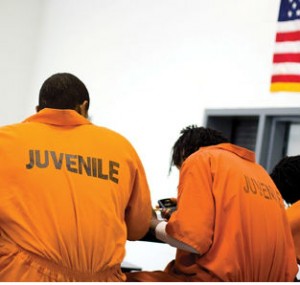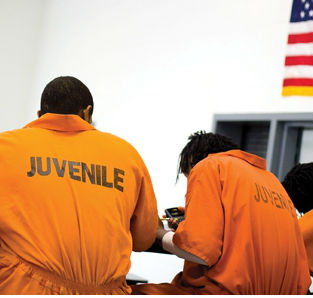 The juvenile justice system in Shelby County, Tenn. is entering its fourth year of federal inspection, now with a thick report about alleged problems. A full remediation plan for the court could be drafted in the next three months.
The juvenile justice system in Shelby County, Tenn. is entering its fourth year of federal inspection, now with a thick report about alleged problems. A full remediation plan for the court could be drafted in the next three months.
The Juvenile Court of Memphis and Shelby County denies due process to youth, according to an April, 2012 report by the federal Department of Justice’s Civil Rights Division. The investigation finds probable cause to believe that some youth are not adequately notified of the charges against them, are not advised of their Miranda rights, do not enjoy timely probable cause hearings and are sent to adult court on only cursory inquiries. The look at 66,000 court records also, the DOJ argues, shows that black children are treated less leniently than white peers.
“The [juvenile] court has been engaged with DOJ since the investigation was opened on August 11, 2009,” said Larry Scroggs, the court’s chief administrative officer and chief council in a written statement, provided in response to a telephone call for comment.
Some changes have already been made, like the creation of a new kind of affidavit to formally inform children and guardians about charges. Others are under discussion between the court and the DOJ, according to Scroggs, who said the goal is a “written agreement that will govern the process of completing remedial measures to bring the court in compliance with all applicable standards.” The document is expected to be in place by this fall, he wrote.
Shelby County Commissioner Henri Brooks first reported issues to the federal agency in 2007, though she traces the problem of mistreatment of black children back to the 1960s.
She accuses the DOJ and the court talks of leaving out the people most affected, “the families of the juveniles” in the system. She said families want to know what the DOJ is going to do about the allegations, especially the ones that touch on race. The county commission happens to be formally absent from the talks as well.
“The county commission has historically rubber-stamped whatever the court has asked for,” Brooks, herself a former employee of the court, admitted. “Now it’s a little bit different and we have a very contentious situation going on here.”
Reforms under discussion, said Scroggs, include speedy probable cause hearings by telephone, asking the county public defender to take over juvenile defense to make it fully independent from the juvenile court administration, stepping up administration of Miranda rights, publishing court forms in Spanish, and considering a safe house or respite center for juveniles to stay upon release if they cannot go back to their homes. Besides that, they are “reviewing and researching statutory and procedural rules and best practices for detention hearings and transfer hearings, aimed at reinforcing juveniles’ due process rights.”
But none of that is a done deal, said Brooks, because “no funds have been allocated for anything.” The commission “doesn’t have a clue” what’s going on between the DOJ and the court, she said.
The juvenile court is operationally autonomous, but mainly depends on county government funding for operations. Brooks thinks adequate representation of children alone would take more staff and cost millions of dollars.
The population of the county juvenile detention center is falling, however. The county juvenile lockup holds 27 children as of Sept. 7, 2012, against an average population over the last two years of 45 to 50 youth. The population has shrunk, Scroggs said, due to two programs. One shifts minor on-campus offenses to a probation-type program housed at school instead of in the court system. The other urges officers to write summons instead of making arrests for seven minor offenses.
The court has an external ally, however. This year, the juvenile court was designated a Juvenile Detention Alternatives Initiatives site by Annie E. Casey Foundation. That means the foundation is helping the court reduce unnecessary confinement of youth, improve public safety, reduce racial disparities, save money and stimulate reforms.
The AECF learned about the DOJ investigation after it started working in Shelby County. And the DOJ does not affect what the foundation does anyway, explained Gail Mumford, senior associate with AECF’s Juvenile Justice Strategy Group.
“We’re not there to get them out of that position,” said Mumford, “but we believe by engaging the strategy contained in JDAI they will be positioned to come into full compliance.”
At any JDAI site, workers help stakeholders align what they’re actually doing with what they want to do.
“We’re going to do the work that we generally do,” said Mumford. “We’re just partners to help them [Shelby County] improve the juvenile justice system of delivery.”
